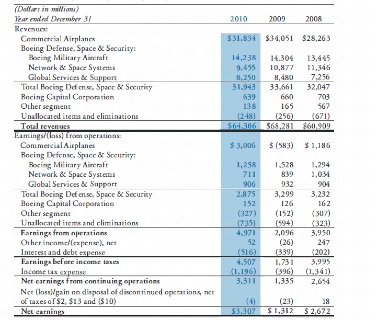- August 15, 2023
- Posted by: Visa Imigration
- Category: Bookkeeping

In today’s rapidly evolving landscape, the successful deployment of gen AI solutions demands a shift in perspective—that is, starting with the end user experience and working backward. This approach entails a rethinking of processes and the creation of AI agents that are not only user-centric but also capable of adapting through reinforcement learning from human feedback. This ensures that gen AI–enabled capabilities evolve in a way that is aligned with human input. Gen AI, along with its boost to productivity, also presents new risks (see sidebar “A unique set of risks”). Risk management for gen AI remains in the early stages for financial institutions—we have seen little consistency in how most are approaching the issue.
Companies Using AI in Cybersecurity and Fraud Detection for Banking

Val Srinivas is types of budgets and budgeting models in accounting the banking and capital markets research leader at the Deloitte Center for Financial Services. He leads the development of our thought leadership initiatives in the industry, coordinating our various research efforts and helping to differentiate Deloitte in the marketplace. Doug Dannemiller is the investment management research leader at the Deloitte Center for Financial Services. He is responsible for driving the Center’s research platforms and delivering world-class research for our clients. Dannemiller has more than 20 years of experience in research, strategy, and marketing in the investment management and wealth management industries. User experience could help alleviate the “last mile” challenge of getting executives to take action based on the insights generated from AI.
- More frontrunners rated the skills gap as major or extreme compared to the other groups.
- He serves at the forefront of insurance industry disruption by helping clients with digital innovation, operating model design, core business and IT transformation, and intelligent automation.
- Most importantly, the change management process must be transparent and pragmatic.
- Frontrunners have taken an early lead in realizing better business outcomes (figure 8), especially in achieving revenue enhancement goals, including creating new products and pursuing new markets.
How banks are using generative AI
The survey indicates that a sizable number of frontrunners had launched an AI center of excellence, and had put in place a comprehensive, companywide strategy for AI adoptions that departments had to follow (figure 4). Many companies have already started implementing intelligent solutions such as advanced analytics, process automation, robo advisors, and self-learning programs. But a lot more is yet to come as technologies evolve, democratize, and are loan fees amortization put to innovative uses.
Companies Using AI in Personalized Banking
Time is money in the finance world, but risk can be deadly if not given the proper attention. Tim Coy is the research manager for the Commercial Real Estate industry within Deloitte’s Center for Financial Services who’s based out of New York City. Prior to Deloitte, he served as a lead researcher for commercial real estate brokerages CBRE and Cushman & Wakefield. Patty is a senior manager and chief of staff at the Deloitte Center for Financial Services, Deloitte Services LP, where she leads the strategy and operations functions of the center. Jim is the managing director of the Deloitte Center for Financial Services, where he is responsible for defining the marketplace positioning and development of the Center’s eminence and key activities. Prior to joining Deloitte, Jim served in several research and consulting leadership roles at TowerGroup.
They can also have difficulty going deep enough on a single gen AI project to achieve a significant breakthrough. With this archetype, it is easy to get buy-in from the business units and functions, as gen AI strategies bubble from the bottom up. The effects of regulation on digital assets and generative AI in the financial space, as discussed at the recent Capital Meets Policy Dialogue. Companies can also look at making best-in-class and respected internal services available to external clients for commercial use. Value delivery could either include customizing offerings to specific client preferences, or continuously engaging through multiple channels via intelligent solutions such as chatbots, virtual clones, and digital voice assistants.
Starters and followers should probably brace themselves and start preparing for encountering such risks and challenges as they scale their AI implementations. Indeed, starters would likely be better served if they are cognizant of the risks identified by frontrunners and followers alike (figure 11) and begin anticipating them at the onset, giving them more time to plan how to mitigate them. This portfolio approach likely enabled frontrunners to accelerate the development of AI solutions through options such as AI-as-a-service and automated machine learning. At the same time, through crowdsourced development communities, they were able to tap into a wider pool of talent from around the world. From the survey, we found three distinctive traits that appear to separate frontrunners from the rest.
Ascent provides the financial sector with AI-powered solutions that automate the compliance processes for regulations their clients need. It analyzes regulatory data, customizes compliance workflows, constantly monitors for rules changes and sends quick alerts through the proper channels. Quantitative trading is the process of using large data sets to identify patterns that can be used to make strategic trades. AI-powered computers can analyze large, complex data sets faster and more efficiently than humans.
This resurgence in AI discussions is now a top priority for executives — and what is amortization the impacts on the industry will be profound. These include innovative propositions, enhanced user experiences, and increased automation to reduce costs and bridge skills gaps. In this report with UK Finance, we examine the current and future state of AI in the UK financial services sector. Drawing on insights from in-depth interviews and a survey of UK Finance members, more than 90% of which have deployed AI, we highlight the immense opportunities and the steps the industry has already taken.
Sooner rather than later, however, banks will need to redesign their risk- and model-governance frameworks and develop new sets of controls. Data quality—always important—becomes even more crucial in the context of gen AI. Again, the unstructured nature of much of the data and the size of the data sets add complexity to pinpointing quality issues.




